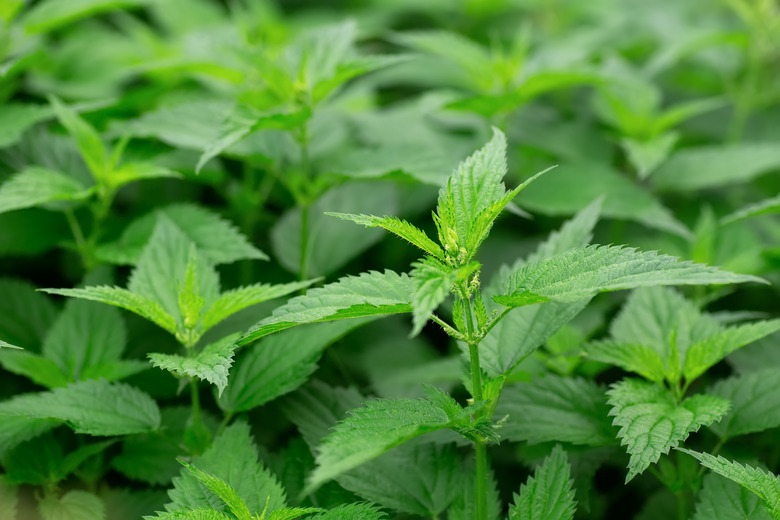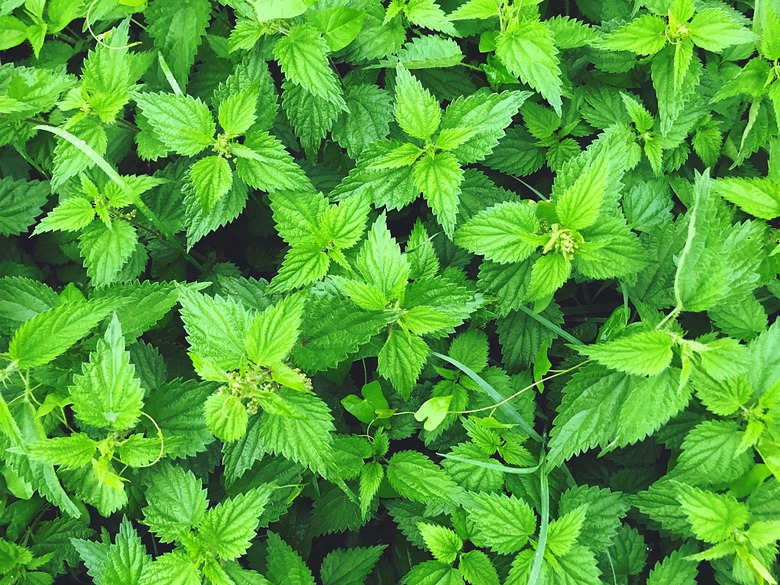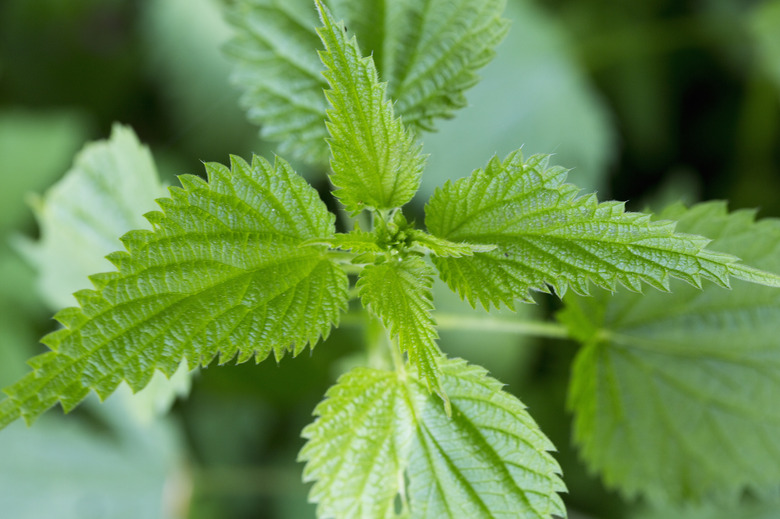How To Grow Stinging Nettle
We may receive a commission on purchases made from links.
With curious nicknames, such as "naughty man's plaything" and "devil's leaf," stinging nettle (Urtica dioica) owes its reputation as an annoying plant to the prickly fibers found on its leaves and stems. In reality, however, this perennial is incredibly useful and even nutritious. It is also easy to grow without much effort; just keep the plant in check or it could spread further than you've intended once it is established.
Best Uses for Stinging Nettle
Best Uses for Stinging Nettle
Stinging nettle gets a bad rap thanks to the bristly, hairlike fibers coating parts of the plant, but it actually has numerous beneficial properties. Young, tender nettle leaves are edible and can be used in soups or as replacements for spinach in many recipes. Nettle leaves offer calcium, iron, and magnesium as well as vitamins A and C. Some brewers even turn the herbaceous nettle into a beer, though its leaves are more commonly used in teas or herbal supplements.
This plant also has immense and well-documented historical significance. Hippocrates wrote of more than 60 medicinal uses for the plant approximately 2,400 years ago. Five thousand years back in China, nettle was used to make paper. Hundreds of years ago in Britain, nettle was a common fabric used to make sheets and table linens. German soldiers in World War I even wore shirts made of nettle.
Stinging nettle also attracts ladybugs that use the plant as a place to lay eggs. Ladybugs are extremely beneficial to a garden, as they eat all sorts of garden pests that may otherwise decimate your favorite plants. Some butterflies use the nettle as their egg nursery as well, so this plant can be helpful to these pollinators. Cut leaves are also useful in making a nutrient-rich tea for other garden plants. Steep the leaves in water for a few days and then use that water on other plants.
How to Grow Stinging Nettle
How to Grow Stinging Nettle
Starting Stinging Nettle From Seed
Starting Stinging Nettle From Seed
Stinging nettle is relatively easy to grow by sowing seeds very early in spring once the ground thaws, or you can plant in fall. Sow stinging nettle seeds a few inches apart directly on top of the soil and then press the soil down a bit. Add a light sprinkling of fresh soil over the seeds. Keep the soil moist but not soaking wet.
The seeds typically germinate in two to four weeks in spring or in early spring if you sow them in fall. Once the plants grow a few inches tall and seem sturdy, thin them to 12 inches apart from one another.
While nettle can be started indoors before the final frost of winter, the seeds do not germinate as quickly indoors or under artificial lights. If you are starting them indoors, start them four to six weeks before the last expected frost in compostable starter pots. Nettle is ready to transplant outdoors when the seedlings are several inches tall.
Starting Stinging Nettle From a Seedling
Starting Stinging Nettle From a Seedling
Garden centers generally don't sell stinging nettle plants, so if you want seedlings, you will have to start the plants from seeds first. Once your nettle seedlings are several inches tall and look strong and healthy, cut the bottoms off the compostable pots, transplanting the seedlings, pots and all, into an area where the nettles won't be a nuisance. Since even brushing up against nettles may result in extreme skin irritation, keep the plants where people and pets won't accidentally contact them. If this is a concern, nettles can also be planted in containers at least 12 inches deep and wide; this is a great way to keep the nettle population under control as well.
Plant stinging nettles a couple of feet apart from one another if you are planting more than one. If left to go to seed, nettles spread easily, so keep this in mind if you are planning to develop a patch of nettles in an unused corner of the property. Cutting the nettle down to near ground level once it goes to flower keeps the plant from reseeding itself all over the property.
In What Zone Does Stinging Nettle Grow Best?
In What Zone Does Stinging Nettle Grow Best?
Stinging nettle is not very picky about where it grows; in fact, it is found all over North America, Europe, and even parts of South America, Asia, and Africa. It's a perennial in USDA zones 4 through 10, although it does not do well in desertlike conditions. It even grows in some parts of Alaska, where it is one of the first perennials to emerge in spring.
When Should You Plant Stinging Nettle?
When Should You Plant Stinging Nettle?
Stinging nettle begins growing very early in spring; it is one of the first plants to sprout in spring even in relatively cold areas. Since it starts so early in the season, it is best to plant it as early as possible in spring or even late winter as long as the soil is soft enough to work. Sowing seeds in fall is another option; this will still yield plant growth in early spring.
Soil, Sunlight, and Water Recommendations for Stinging Nettle
Soil, Sunlight, and Water Recommendations for Stinging Nettle
Stinging nettle prefers nutrient-rich soil, such as soil that contains compost or decaying organic matter typical of its natural habitats in wooded areas and along streams. Nettle grows well in full to partial sunlight and even in areas of filtered sunlight, such as near paths in the woods and along river banks. In hot climates, shade is especially helpful.
Nettle needs moisture to thrive; it prefers damp or moist conditions. If planted in an area with full sun, mulch helps the soil retain moisture that nettle and other plants love. Water nettle whenever the top inch or so of soil seems dry.
How to Propagate Stinging Nettle
How to Propagate Stinging Nettle
Stinging nettle is also easy to grow from a cutting. While wearing protective gloves, use clean, sharp scissors to trim 5 to 6 inches off the top of a young, green stem. Pinch all but the top set of leaves off the stem and then place the stem in a clear glass with water. The water level should not cover the leaves, just the stem. The nettle cutting can also be placed directly in a pot to root that way, but it is easier to tell when the roots are growing sufficiently in water. If you are rooting the nettle in water, change the water every few days if it begins to look cloudy or if the plant doesn't seem to be doing well.
In several weeks, the nettle cutting should have roots that are long and strong enough to survive a transplant to a larger pot or directly into garden soil. Remember to wear gloves whenever you need to touch the nettle plant.
How to Harvest Stinging Nettle
How to Harvest Stinging Nettle
Harvesting these leaves requires gloves that are thick enough to keep the needlelike, stinging hairs on the plant from pricking your fingers and forearms. Keep your body fully covered as well since the tips of these small fibers easily break off into bare skin, causing pain, itching, swelling, and/or a rashlike redness. Cooking or drying the leaves disarms the prickly nature of the fibers so they are no longer an irritant. Running them through a food processor, such as for a pesto recipe, accomplishes this as well.
Harvest young leaves from the plant in spring or early summer before it goes to flower, as this is when it is best to consume. Once the plant goes to flower, the leaves develop a gritty substance that may irritate the kidneys. Trim off young, small leaves with clean scissors, depositing the leaves into a basket or bowl. Another option is to cut any stem full of leaves down to a few inches from the ground, cutting just above a node or area where small leaves emerge. This makes it easier to manage if you plan to dry bundles of nettles, and it also encourages more new growth.
Common Pests and Other Problems for Stinging Nettle
Common Pests and Other Problems for Stinging Nettle
Stinging nettle attracts insects that may be viewed as problematic, but in reality, this is a good thing. Aphids, which are viewed as garden pests, love nettle, but their presence attracts ladybugs and other predatory insects that will help keep the rest of your garden plants healthy. Leave your nettles free of any kind of insect treatment to use them as beneficial hosts in the garden.
Some butterflies also lay eggs on this plant. If you see caterpillars on your nettle, leave them alone because once these larvae turn into butterflies, they are helpful pollinators that benefit many forms of plant life. The caterpillars may munch on nettle leaves, but ultimately, this is good for the environment. In the grand scheme of things, it may help protect other garden plants from insect damage.
Common Diseases for Stinging Nettle
Common Diseases for Stinging Nettle
Stinging nettle plants are susceptible to several types of rust fungus. At various stages of a fungal pathogen's life, the rust may look like spots on the nettle leaves or noticeable growths protruding from the underside of the leaves. Sometimes, these rusts look almost like tiny clusters of coral, while in other cases, they appear as longer growths that almost look like caterpillars or legumes.
Rust is problematic for nettle and other plants in that it is often hard to treat. Avoid fungal infections by cutting back on overhead watering, as moist conditions may help this fungus thrive. Water the ground rather than the nettle plant itself to help prevent the issue and to help eliminate the problem. Cut off and discard infected leaves and stems while wearing gloves. Do not consume any parts of a nettle plant that appear to be infected with a fungus.


